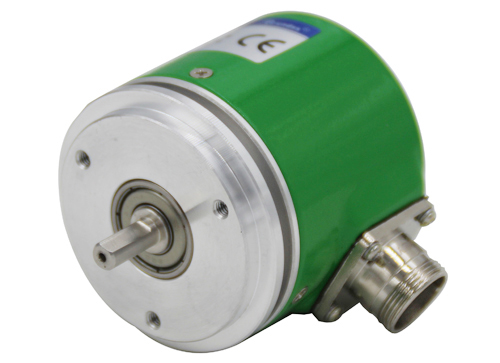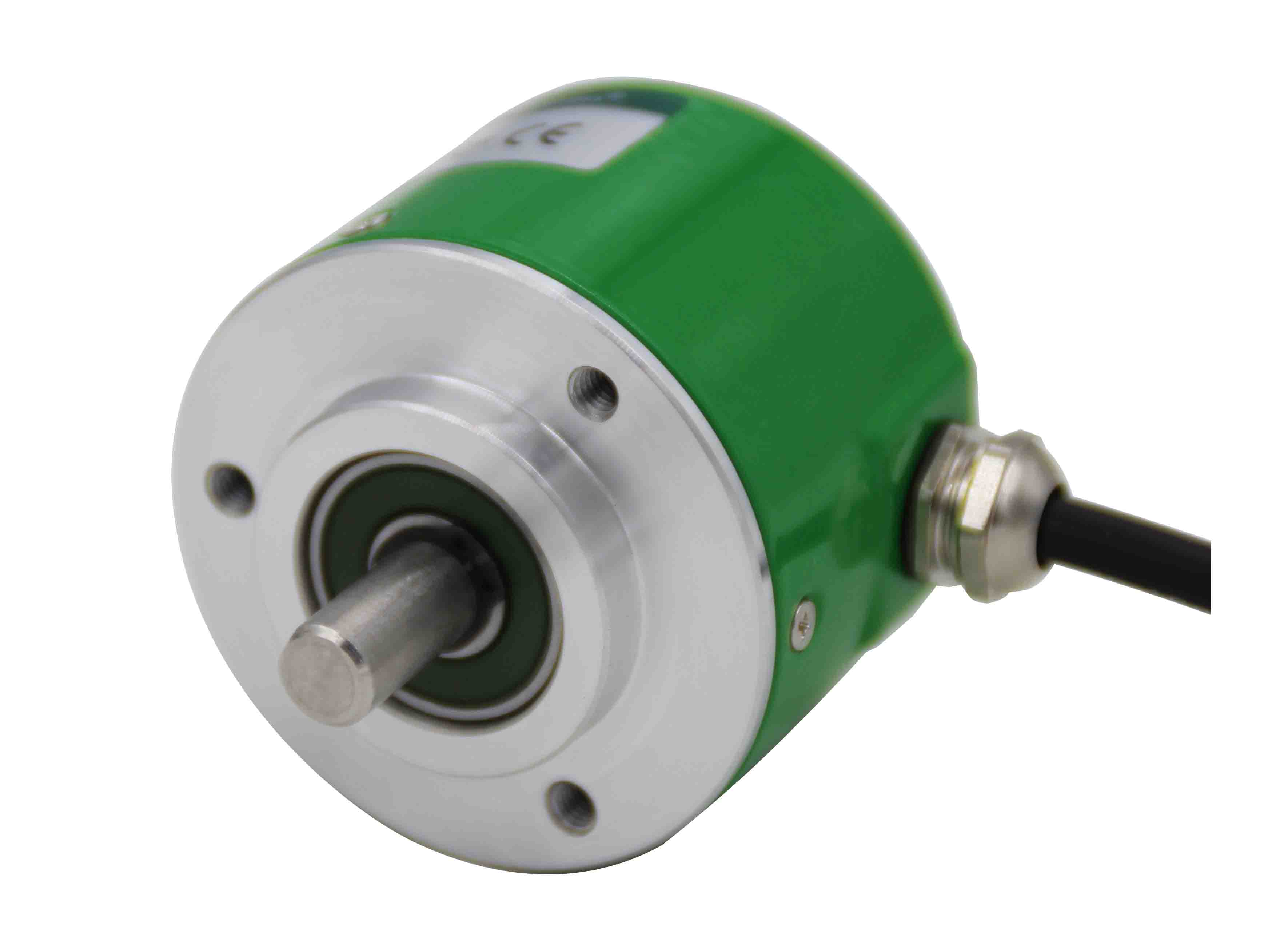Incremental Encoder
Incremental encoders work by providing a certain amount of pulses in the encoder's rotation to give distance and speed feedback for motor applications.
The incremental encoder provides specific pulses for the encoder rotation, and these pulses may be in one or two lines of pulses. These lines are typically designated as "A" and "B" channels, and the offset phasing of the channels, which is also known as the quadrature, helps determine rotation. The signals are created by a sensory array inside a printed circuit board, and the rest of the incremental encoder includes a spindle assembly and cover.
Incremental encoders are useful for light-duty, heavy-duty and industrial applications.

- High Resolution Incremental Encoder
The native lines for regular incremental encoder disc is 6000 in highest.It can't satisfy the requirements of some applications.After the company introduced new technology,we could realize 1000000 lines resolution and ±2" accuracy.
| Picture | Model | Application | Outer Dia. (mm) |
Shaft Dia. (mm) |
Resolution |
Operating Voltage | Output Signal | Max Mechanical Speed(r/min) | Protection Class | Operating Temperature | PDF Download |
|
 |
DCC58.1S | CNC Spindle | 58 | 6 | 8000-65536ppr | 5V/8-26V | L,A | 2000 | IP62 | -20~+85℃ |  |
|
 |
DCC50S | Automation | 50 | 8 | 8000-65536ppr | 5V/8-26V | L,A | 2000 | IP64 | -20~+85℃ |  |
|
 |
DCC38S | Automation | 38 | 6 | 8000-65536ppr | 5V/8-26V | L,A | 2000 | IP62 | -20~+85℃ |  |
|
Output Signal Definition:
C:open collector;E:voltage;F:pushpull;L:line driver; A:wide voltage line driver




















 Products
Products